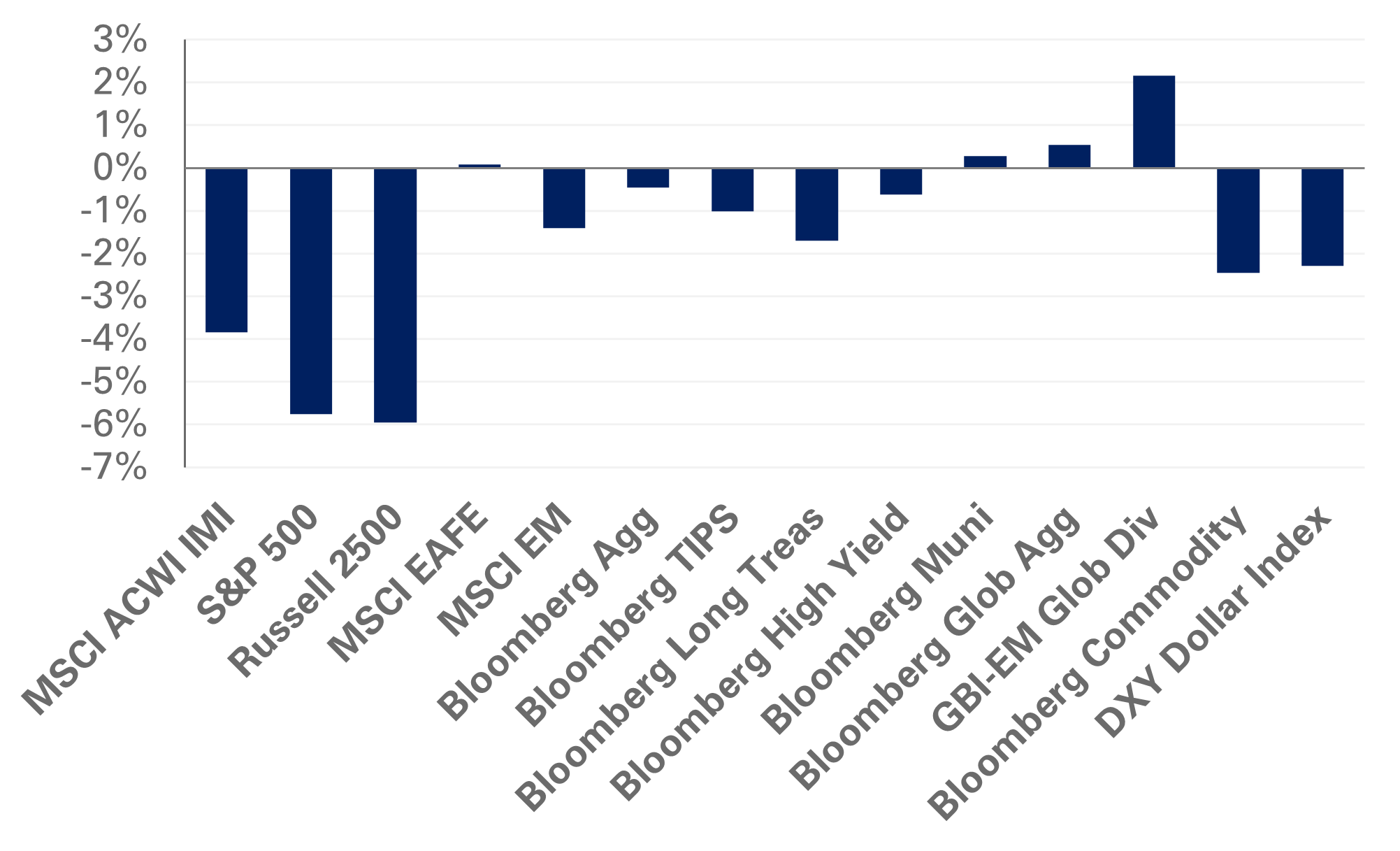Equities sold off in December amid recessionary fears fueled by the Federal Reserve’s tighter monetary policy. In the U.S., the S&P 500 Index fell 5.8%, bringing losses for 2022 to 18.1%, the worst calendar year return since the Global Financial Crisis in 2008. Value stocks outperformed with the Russell 1000 Value Index down 4%, finishing the year in the red at 7.5%, while the Russell 1000 Growth Index declined 7.7% ending the year 29.1% lower. Non-U.S. developed markets were up 0.1%, outperforming all other regions.
In fixed income, developed market bond yields continued to face upward pressure amid the hawkish stance from central banks. In the U.S., the yield curve experienced a bear flattener with the 10- and 30-year yields rising 18 and 15 basis points, respectively. The 10-year German Bund yield also increased 58 basis points to 2.53% amid inflation pressures in the Eurozone.
Meanwhile, in real assets, commodities saw another volatile month, rocked by weakening global demand and supply constraints. Spot WTI Crude Oil fell 0.4% in December to $80 per barrel.
NEPC’s stance towards risk assets remains unfavorable given the uncertain dynamics around growth and inflation. We recommend building exposure to short-term investment-grade credit as higher yields offer an attractive defensive position. We also suggest adding exposure to value stocks in U.S. large-cap equity to mitigate the portfolio impact of rising interest rates and inflation normalizing above market expectations. In addition, we still encourage a dedicated allocation to assets that support liquidity needs in periods of stress.




